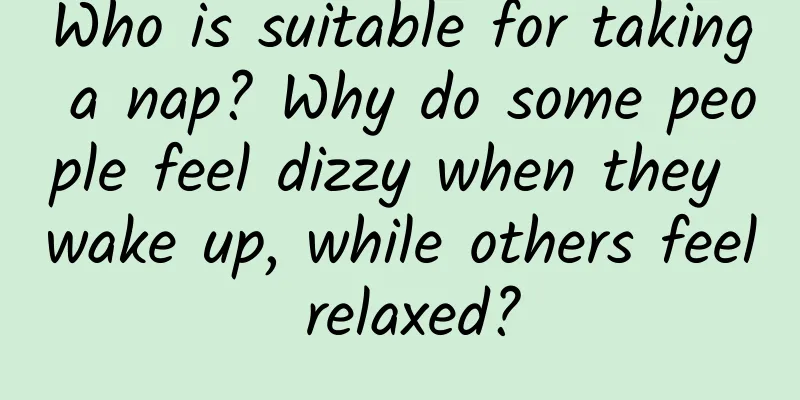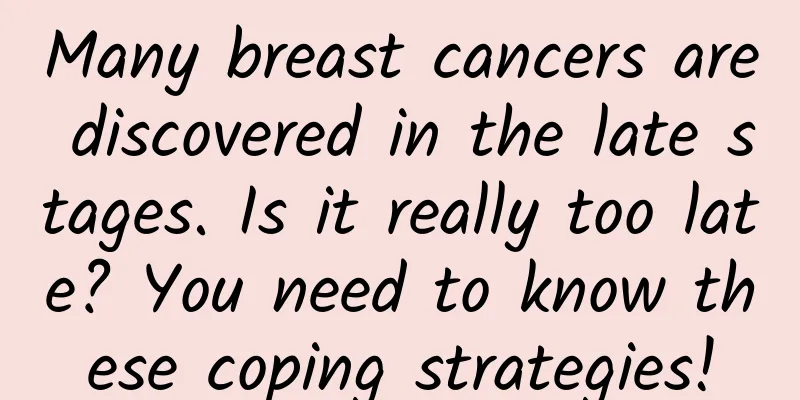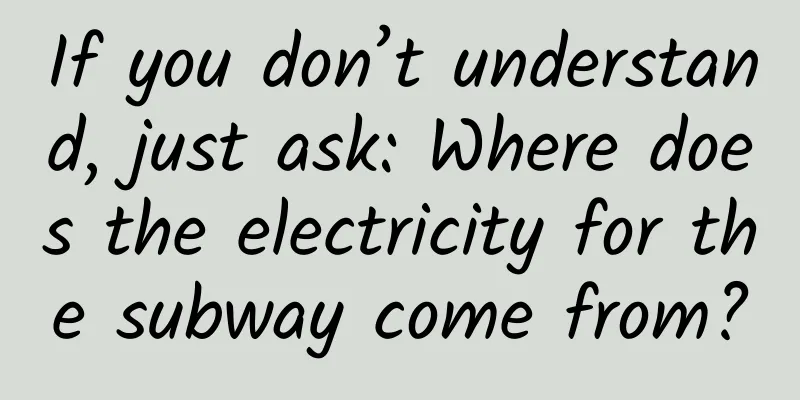Who is suitable for taking a nap? Why do some people feel dizzy when they wake up, while others feel relaxed?

|
"I can't remember how long it has been since I took a nap. When I get to work in the afternoon, I feel listless, shaking my head, and I can't even tell whether I'm awake or asleep." This is a monologue from a working cowhorse about "sleep deprivation". In this era when sleep is as far away as "white moonlight", it's time to talk about the issue of naps. 01 What is a nap? Napping, also known as "daytime nap" or "short sleep", refers to any sleep behavior during the day that lasts less than 50% of an individual's main sleep time. This behavior is not only closely related to the environment we live in, but also involves the joint action of multiple genes. Foreign scholars have conducted a genome-wide study on people who take naps and identified multiple sites related to naps. In other words, we may be born with two sleep modes: one at night, when we sleep longer; and one during the day, when we are told to take a nap. Image source: Pixabay 02 Benefits of taking a nap So what are the benefits of naps that deserve a place in the gene family? Over the years, many scholars have devoted themselves to studying the benefits of naps, such as reducing the incidence of cardiovascular diseases. However, there are still controversies, and some even have completely opposite conclusions. This difference may be related to the research subjects and research methods. Even so, the author has found reasons for naps for you and me who work hard in the workplace from the hundreds of schools of thought. Including: 1. Improve cognitive and memory abilities, and optimize work and learning efficiency. Sara C. Mednick is a professor of psychology who studies sleep. In 2008, he published research results in the journal Behav Brain Res, proving that naps can enhance memory and produce powerful perceptual learning abilities. Subsequently, in 2016, he published "Autonomic Activity During Sleep Predicts Memory Consolidation in Humans" in the journal PNAS, proving for the first time that memory improvement may be related to increased autonomic nervous system activity during sleep, revealing the underlying mechanism. 2. Fight drowsiness, fatigue, and low alertness. A study published in Biol Psychol in 2006 proved that naps are helpful for improving alertness. Then in 2023, another study published in J Sleep Res verified through psychomotor vigilance tests and resting EEG monitoring that the accumulation of homeostatic sleep pressure caused by lack of naps is one of the main reasons for the decline in human alertness. 3. Reduce stress levels. Studies have shown that naps can affect the levels of neurotransmitters and immune markers such as norepinephrine and interleukin-6, thereby relieving stress. 4. Improve mood. A study published in J Sleep Res shows that nap deprivation may reduce children's ability to effectively complete tasks and self-regulation strategies. Over time, it may increase the risk of emotional abnormalities. As the saying goes, if you don't sleep at noon, the afternoon will be wasted. It seems that there is some scientific basis for this. 03 Naps are not suitable for everyone First of all, there are four main types of people who are suitable for taking naps. The first category: disordered napping, which is caused by poor sleep quality and insufficient sleep time, and requires napping to make up for it. For example: doctors and nurses who need to work night shifts and people with insomnia. The second category: restorative naps, for people who feel tired from a morning of work or study and take naps to restore their memory and cognitive abilities, such as students and office workers who work 996 or 007. The third category: Hedonic naps. This group of people take naps as a daily routine out of lifestyle habits and personal enjoyment. The fourth category: mindful nap, which is to purposefully improve personal alertness, environmental awareness, and state of mind through napping. Image source: Pixabay But not everyone is suitable for enjoying the benefits of naps. The following are two categories of people who are not suitable for naps: 1. People who are older, in poor health, and less active: Daytime naps for people aged 65 and over increase the risk of cardiovascular disease, and as the frequency and duration increase, the risk of Alzheimer's disease also increases. In addition, a series of epidemiological studies have shown that daytime sleep increases the risk of cardiovascular disease, dementia, and death in people with poor health and less activity. 2. Unemployed people and people suffering from depression: Emotional naps due to stress, anxiety, depression, boredom and other emotions may be harmful to health. 3. People with insomnia: Sleep is related to sleep pressure. Simply put, sleep pressure starts to accumulate after waking up every morning, and it will not be until it reaches a certain level at night that we fall asleep. For people with insomnia, it is difficult for them to accumulate enough sleep pressure. If they take a nap during the day, it may weaken the already insufficient sleep pressure, thereby aggravating the symptoms of insomnia. 04 Nap posture PK Taking a nap is a magical thing. Some people wake up with a headache and body aches, while others wake up feeling relaxed. All of this seems random and uncontrollable, but in fact, there are mysteries, including the choice of sleeping position. 1. Pros of sleeping on your stomach: convenient, you only need a table and a stool. Cons: the arms are the first to suffer, as the weight of the head affects blood circulation and nerve conduction, causing muscle soreness and numbness in the hands, and local nerve damage in severe cases. In addition, sleeping on your stomach may cause blurred vision, tinnitus, neck pain, and gastrointestinal bloating due to squeezing. Long-term forward bending is also more likely to cause problems such as the straightening of the physiological curvature of the cervical and lumbar vertebrae. If you must sleep on your stomach, it is recommended to add a pillow, at least to free your hands. 2. Sitting and sleeping Advantages: Suitable for working alone, and saves a table compared to lying down. Disadvantages: Without proper neck support, long-term sitting and napping may cause pressure on the cervical spine. In addition, a study published in Chronobiol Int pointed out that the quality and quantity of sleep obtained by napping in an upright seat are significantly lower than those in a reclined or flat seat. 3. Semi-sitting reclining position Advantages: It can keep the body relaxed. Compared with the first two, it reduces the pressure on the spine and improves the quality of sleep. Disadvantages: For some people, it may still be difficult to relax due to the uncomfortable posture, affecting the effect of nap. And it requires a reclining chair or sofa support. 4. Lying flat Advantages: The most recommended sleeping position, which can reduce the impact on the body and help to relax and fall asleep. Disadvantages: It requires high-quality nap equipment and is difficult to achieve in public places such as offices. 05 How long should you take a nap? From falling asleep to waking up, the brain generally goes through 4 to 5 sleep cycles, each cycle includes 3 non-rapid eye movement sleep periods (N1, N2, N3) and 1 rapid eye movement sleep (REM) period, totaling 90 to 110 minutes. N1 and N2 are light sleep periods, when the body's muscles begin to relax, heart rate and breathing become regular, brain waves slow down, body temperature and blood pressure drop, and it is easy to be awakened, and wake up refreshed. N3 is a deep sleep period. When awakened during this period, the old cortex with fast reactions will be activated first, and people will feel confused, unclear, and irritable, which is why some people feel that they are getting sleepier the more they sleep. Therefore, based on this information and the in-depth research on the brain conducted by clinical scientists, the National Sleep Foundation recommends that people should try to complete the awakening task between the N1-N2 period and control the nap time to about 20 minutes, not more than 30 minutes. Naps are not paid laziness, but to replenish energy so that the brain can complete work and study more efficiently. If conditions permit, you might as well take a short nap during the lunch break to recharge your energy for the afternoon. Source: Chongqing Science and Technology Museum Author: Wei Yi, PhD of Chongqing Medical University, one of the top ten science popularization ambassadors in China Audit expert: Li Chunli Statement: Except for original content and special notes, some pictures are from the Internet. They are not for commercial purposes and are only used as popular science materials. The copyright belongs to the original authors. If there is any infringement, please contact us to delete them. Author: Wei Yi, PhD of Chongqing Medical University, one of the top ten science popularization ambassadors in China Audit expert: Li Chunli |
<<: AI discovers new brain patterns, and brain-computer interfaces are "enhanced"!
Recommend
If you work in the Internet industry, do you really understand traffic analysis?
In my current job, I come into contact with many ...
Some people don't exercise not because they are lazy, but because they are allergic to exercise
Some people don't exercise not because they a...
Five programming fallacies
[[129427]] I'm a hacker. I've been coding...
Musk confirmed that Tesla has recently stopped production, but also said that Model S/X will soon be produced in two shifts
Earlier, foreign media reported that Tesla had su...
The most common pitfalls when promoting new products
The marketing strategy of a product must go with ...
What is it like to grow up in a hurry?
"How old is the child?" "Twenty ye...
[Refutation] Even if the product is shit, you have to operate it
Yesterday I answered a question on Zhihu: "W...
Offline event planning and traffic diversion skills!
Nowadays, the Internet dividend period has long d...
Brother Cat Oriental Jade Cat decisive battle strong stock weapon to firmly grasp the main rising wave of strong stocks video + document + indicator 8 episodes
Brother Cat Oriental Jade Cat decisive battle str...
How much does it cost to customize the Korla wood mini program?
The mini program provides convenience for publici...
33 essential professional terms for information flow advertising, you may not have heard of the first one!
Today, we have compiled 33 professional terms tha...
Anqing SEO Training: Do visitor preferences affect visit rate? How does SEO grasp visitor preferences?
A good website is undoubtedly the hard work of ma...
Sony and LG chose to give up curved TVs, but why Samsung still insists on it?
Curved TVs should have ushered in a brighter futu...
1 person died, many people were rushed to the hospital! Be careful when traveling recently
Around 14:00 on April 5 Nanning, Guangxi Zhuang A...
Can Nokia be reborn in the mobile phone industry?
Recently, Microsoft replaced Nokia with Microsoft...









